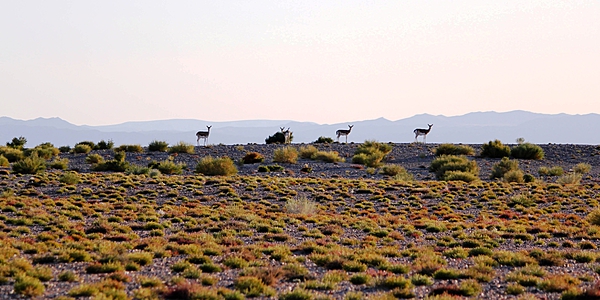


There are herds of gazelle in Eastern Mongolia. Find a guide and go on their tracks during a trip to Mongolia!
Mongolian gazelles belong to the bovid family.. Their size varies between 3.3 ft and 5 ft for an average height of about 2 ft. Females have no horns, whereas the males do.
65 years ago, the territory of these gazelles extended over all of Mongolia and even parts of Russia and Kazakhstan! Today, they are confined to Eastern Mongolia and graze in landscapes of plains, steppes and meadows. They show a preference for dry meadows.
Mongolian gazelles live in herds. The size of the herds differs depending on the season (they are larger in winter, up to 100 heads). If you see one, you are sure to see several! Like in just about everywhere in Mongolia, their main predators are wolves and eagles.
Despite a clear drop in its population, the Mongolian gazelle is not considered to be an endangered species. It is nonetheless listed among the "Minor Preoccupations".
Today, the gazelles are in a highly protected zone, the Mongolian Dornod. This is one of the biggest known ecosystems.
Once you reach the city of Nomrog, you should be able to find guides to help you programme your nature outing. Plan to go for several days, so that you can rest afterwards and maybe spend a night in the steppes if you are lucky enough to be hosted by a nomad family!
To finally get a look at the gazelles, you will cross magnificent virgin landscapes, with only a few yurts or log cabins to remind you that man lives here as well.
You will need a guide, a 4x4 and lots of patience! These are wild animals who live in the open wild and are not used to seeing tourists.

There are tens of thousands of Mongolian gazelles and there will no doubt be a few that come your way. You can, depending on the season (be careful in the mating season, as males in heat can become quite aggressive), ask your guide to stop. A high-up position is strategic. Come armed with binoculars and a good zoom lens and take advantage of the sun to watch the gazelles grazing down below.
If not, like in a sort of safari, you can drive close to them for prolonged moments. In my opinion, this is a sight that is unique in the world! And even if you think it a little complicated to arrange, you will no doubt congratulate yourself for having done so.